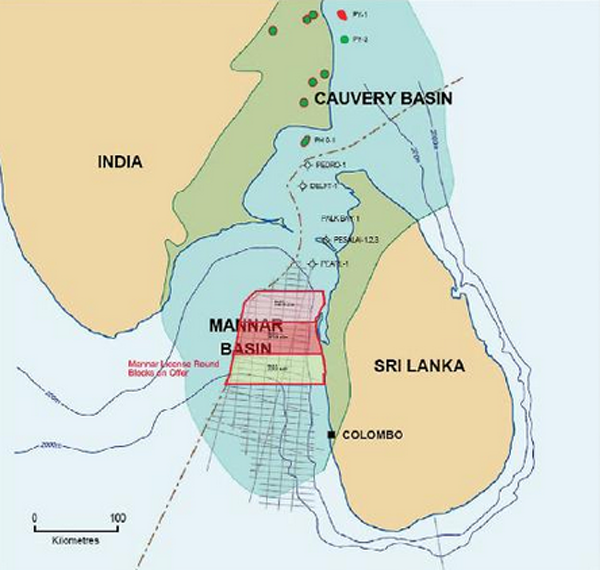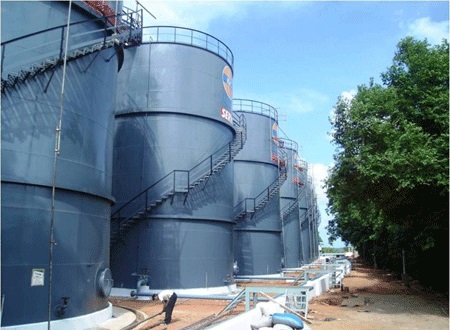Colombo, September 19 (NIA): Sri Lanka is exploring possibilities of private investment in oil refining and has invited several foreign companies, including Indian companies like Reliance, to come up with proposals, the Minister for Petroleum, Chandima Weerakkody, told the Foreign Correspondents’ Association here on Monday.
He said that he will be visiting India soon to meet his Indian counterpart. Officials said that the visit could take place either in October of November.
Weerakkody said that Sri Lanka is looking to get investments to the tune of US 4 billion in the petroleum sector to meet domestic demand and also exploit export potential, keeping in view the strategic location of the island nation.
According to Sri Lanka’s Central Bank, the country imported US$ 2.7 billion worth of petroleum and petroleum products in 2015. Fuel imports accounted for 14.3 percent of the import bill. In 2014, when word prices were significantly higher, the fuel component of the country’s import bill was as high as 23.7 percent.
Sri Lanka’ only refinery at Sapugaskanda, is 47 years old, and is facing problems. According to the website of the Ministry of Petroleum, the refinery has been undergoing immense production constrains and technical difficulties due to non-availability of Iranian Light crude which is best suited for use in the refinery in terms of the yield and refinery margin obtained from the refining process.

As a result of ongoing US sanctions against Iran, there was an attempt to shift to Oman Export Blend, Murban, and Arabian Light. But the use of these resulted in a substantial reduction in the refinery margin, impacting adversely on the profitability of locally refined products. Sanctions against Iran have also led to the closure of the refinery on several occasions.
It is in this context that Minister Weerakkody is seeking foreign partners to set up a refinery or improve matters at the existing one, to enhance domestic refining capacity.
Gas Exploration
Weerakkody also said that Sri Lanka is formulating a gas exploration policy for marketing and distribution as there are good reserves of gas in the Mannar basin in the northern part of the country.
Saliya Wickramasooriya, Director General of the Petroleum Resources Development Secretariat, said that Sri Lanka’s quantified gas resource is 2 Trillion Cubic Feet (TCF) and the potential is at least 10 TCF.
Cairns (India) had done a study of the gas reserves potential at a cost of US$ 235 million. The study had identified natural gas reserves valued at an estimated US$ 12 billion in a section of the Mannar Basin.
The Government has already inked an agreement with Total S.A., a French multinational, to conduct a Joint Study on two blocks off the country’s east coast, known as JS-5 and JS-6.
Petroleum Minister Weerakkody asserted that his country is in favor of LNG being included in the energy mix for power plants to be set up in future. He said the decision to opt for LNG has been taken to safeguard the environment and keeping in view the gas reserves in the country.

Sri Lanka has decided to shelve the proposed coal power plant at Sampur, which was a joint venture of the Ceylon Electricity Board (CEB) and the Indian National Thermal Power Corporation (NTPC).
Indian Company PetronetLNG Shows Keen Interest
While India has reservations about the switch over to LNG from coal at this juncture when all agreements relating to a coal fired plant has been signed, it has not stopped the public sector Petronet LNG Ltd from exploring the possibility of setting up an LNG-fuelled power plant here.
Further discussion on this will take place when the Power Ministers of the two countries meet in October or November.
Trincomalee Oil Tanks
The Sri Lankan is wanting to develop 30 World War II-vintage oil tanks in the Trincomalee Upper Tank Farm through a joint venture with the Lanka Indian Oil Corporation. The LIOC is already using 12 tanks in the Lower tank Farm. The Sri Lankan government is to get a consultant to help develop the tanks in the Upper Tank Farm.

























































